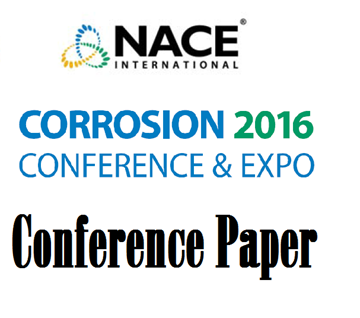Search
Chemical Inhibitors
View as
Sort by
Display
per page
51316-7018-Pmoa - A New Corrosion Inhibitor For Cooling Systems Based On Natural Organic Acid
Product Number:
51316-7018-SG
ISBN:
7018 2016 CP
Publication Date:
2016
$20.00
51316-7115-Risk Assessment And Downhole Chemical Treatment Program For Production Wells Within The Wafra Field
Product Number:
51316-7115-SG
ISBN:
7115 2016 CP
Publication Date:
2016
$20.00
51316-7264-New Developments in Iron Sulfide Scale Dissolvers
Product Number:
51316-7264-SG
ISBN:
7264 2016 CP
Publication Date:
2016
$20.00
51316-7279-Enhanced Biocide Treatment of Corrosive Biofilms
Product Number:
51316-7279-SG
ISBN:
7279 2016 CP
Publication Date:
2016
$20.00
51316-7283-Improved Packaging Film Incorporating Vapor Phase Corrosion Inhibitors and High Recycle Content
Product Number:
51316-7283-SG
ISBN:
7283 2016 CP
Publication Date:
2016
$20.00
51316-7293-Insights on the impact of Fluid Cooling on High Temperature Conditions (175C) for Carbonate and Sulp
Product Number:
51316-7293-SG
ISBN:
7293 2016 CP
Publication Date:
2016
$20.00
51316-7332-Bioinspired “Green” Scale Inhibitors For Mitigation of Silica Scales
Product Number:
51316-7332-SG
ISBN:
7332 2016 CP
Publication Date:
2016
$20.00
51317-9142-High Performance Water Based Coating Enhanced with Nano Vapor Corrosion Inhibitors Markus Bieber – Cortec Corporation
Product Number:
51317-9142-SG
Publication Date:
2017
$20.00
51317-9466- Inhibitor Partitioning Efficiency Using Fluorescence Spectroscopy Detection
Product Number:
51317-9466-SG
ISBN:
9466 2017 CP
Publication Date:
2017
$20.00
51317--9519-Development of Application Friendly Products for Wet Gas Corrosion Inhibition
Product Number:
51317--9519-SG
ISBN:
9519 2017 CP
Publication Date:
2017
$20.00
51317--9544-External Corrosion Protection of Aboveground Storage Tanks Using Vaporized Corrosion Inhibitors
Product Number:
51317--9544-SG
ISBN:
9544 2017 CP
Publication Date:
2017
$20.00
51317--9551-Identification of Compounds that Effectively Block Microbial H2S Production
Product Number:
51317--9551-SG
ISBN:
9551 2017 CP
Publication Date:
2017
$20.00












